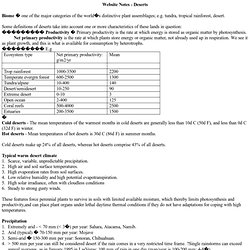

Origins of 10X – How Valid is the Underlying Research?-10x Software Development. I recently contributed a chapter to Making Software (Oram and Wilson, eds., O'Reilly, 2011).

The purpose of this edited collection of essays is to pull together research-based writing on software engineering. In essence, the purpose is to say, "What do we really know (quantitatively based), and what do we only kind of think we know (subjectively based)? " My chapter, "What Does 10X Mean" is an edited version of my 2008 blog entry "Productivity Variations Among Developers and Teams: The Origin of 10x.
" The chapter focuses on the research that supports the claim of 10-fold differences in productivity among programmers. Laurent Bossavit published a critique of my blog entry on his company's website in French. The 10x developer is NOT a myth. Last night, I tweeted the following: I'm confused by the claim that "10x" or "rockstar developers" are a myth.

Productivity - "A good programmer can be as 10+ times more productive than a mediocre one" Medieval agriculture. Crops and Crop Yields In average soil, as found in Namur using local practices: A person needs about 25 bushels of mixed produce a year to survive.

Three-quarters of this would be from crops grown in fields (as opposed to meat, fish, garden fruit and vegetables and foraged foods). Therefore a person in an average year can be supported by about 2.5 acres of wheat, barley and legumes. In a poor year this rises to 4-5 acres. Open Fields Open fields are primarily used in areas where arable farming is the mainstay of rural life. Three Field System Most manors in northern and western Europe operate a three-field crop rotation system. Each field is sub-divided into a dense patchwork of crops by paths and ditches as well as the occasional copse. The uneven network of hedges and ditches breaks each field into irregular furlongs: sections of field dedicated to a single crop.
Two Field System The two field system lets half the land lie fallow each year. Alternative Systems. Biodiesel. Bus run by biodiesel Space-filling model of methyl linoleate, or linoleic acid methyl ester, a common methyl ester produced from soybean or canola oil and methanol Space-filling model of ethyl stearate, or stearic acid ethyl ester, an ethyl ester produced from soybean or canola oil and ethanol Biodiesel refers to a vegetable oil- or animal fat-based diesel fuel consisting of long-chain alkyl (methyl, ethyl, or propyl) esters.

Biodiesel is typically made by chemically reacting lipids (e.g., vegetable oil, animal fat (tallow[1][2])) with an alcohol producing fatty acid esters. Biodiesel is meant to be used in standard diesel engines and is thus distinct from the vegetable and waste oils used to fuel converted diesel engines. The National Biodiesel Board (USA) also has a technical definition of "biodiesel" as a mono-alkyl ester.[3] Blends[edit] Biodiesel sample Applications[edit] Distribution[edit] Vehicular use and manufacturer acceptance[edit] Railway usage[edit] Aircraft use[edit] Rudolf Diesel.
John Libbey Eurotext : Éditions médicales et scientifiques France : revues, médicales, scientifiques, médecine, santé, livres - Texte intégral de l'article. Auteur(s) : Emmanuelle Lamade1, Jean-Pierre Bouillet2 1CIRAD-CP, UPR 80, ETP, IOPRI, Medan, Indonesia2CIRAD-Forêt, UPR 80, ETP, TA/10C, Campus international de Baillarguet, BP 5035, Montpellier Cedex 5, France It is generally accepted that there is a link between the increase in average temperature at the earth’s surface during the 20th century (0.6 °C +/– 0.2 °C) and the higher concentration of greenhouse gasses (GHG) in the atmosphere, particularly CO2 which is responsible for 50% of the overall GHG effect, apart from water vapour [1], and its average concentration increased from 290 ppm in 1900 to 360 ppm in 2000, which is a value that had not been reached for at least 420 000 years1.

For 20 years we have been seeing an average annual increase of 3 GtC (3.109 tC) in the atmosphere due to the burning of carbon fossil fuels, and to changes in land use, primarily deforestation (7 GtC and 1 GtC in 2000 [2]). Level Geography Ecosystems Revision - Ecosystem productivity. Every ecosystem has a level of productivity, which helps discover the potential of an ecosystem for food production.

Primary productivity: Plant productivity. Secondary productivity: Animal productivity. 9(l) Primary Productivity of Plants. Primary Productivity of Biomes. Website Notes - Deserts. Biome one of the major categories of the worlds distinctive plant assemblages; e.g. tundra, tropical rainforest, desert.

Some definitions of deserts take into account one or more characteristics of these lands in question: Productivity Primary productivity is the rate at which energy is stored as organic matter by photosynthesis. Net primary productivity is the rate at which plants store energy or organic matter, not already used up in respiration. We see it as plant growth, and this is what is available for consumption by heterotrophs. E.g Cold deserts - The mean temperatures of the warmest months in cold deserts are generally less than 10d C (50d F), and less than 0d C (32d F) in winter.
Learn Science at Scitable. Geobiology_05.